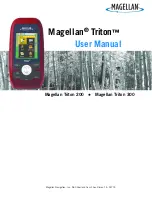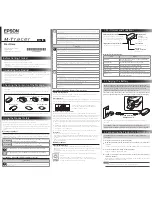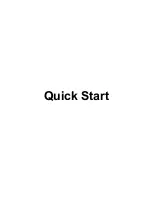
www.javad.com
108
Coordinate Systems
With all of these movements in coordinates, how is a surveyor
expected to maintain a coordinate database that can be
used for years? Javad’s knowledgeable team of geodesists
and software engineers has created a rigorous and accurate
means to accomplish this. Because NAD83 is constantly
maintained by NGS relative to IGS08 (which is substantially
the same as ITRF2008) through observed velocities of the
Continuously Operating Reference Station Network (CORS),
it is possible to relate the internal coordinate database to a
specific epoch (date and time) within ITRF2008. For J-Field
the internal reference frame and epoch is ITRF2008, at the
epoch (or date/time) defined by the user at the creation of
a particular Coordinate System. As Coordinate Systems are
refined creating new adjustments, this scheme will allow any
collected points to be easily transformed across epochs and
reference frames to other highly precise reference frames
both now and in the future. For the surveyor, all of this is
transparent and he may well never view his coordinates
related to ITRF2008 in J-Field, preferring to only consider
his coordinates in his favorite geodetic coordinate system,
but he will do well to understand that internally within the
database all coordinates in all projects are related to the
same reference frame with the appropriate epoch.
Therefore if a surveyor enters the NAD83(2011) coordinates
of a point from an NGS Online Positioning User Service (OPUS)
solution into J-Field, with the proper coordinate system set,
the coordinates are transformed from NAD83>ITRF08 using
a 14 parameter transformation and then stored. At any time
these coordinates are viewed, exported or used for COGO
calculations, they are retrieved from the database as ITRF08
and transformed from ITRF08>NAD83 before being used or
displayed.
Beyond the benefits of storing all project coordinates in a
common reference frame, users can also make use of the
ITRF08>NAD83 transformations for entering coordinates
from positioning services that do not support NAD83, such
as the Australian Positioning Service (AUSPOS). Because this
service only publishes ITRF08 coordinates, it is necessary to
make the transformation from ITRF08>NAD83 if the user
wishes to be related to NAD83.
J-Field
can accomplish this
with ease.
Building A Coordinate
System In J-Field
In J-Field, a Coordinate System is composed of:
A Related Geodetic System (or reference frame) such
as WGS84(ITRF2008), PZ-90 or NAD83(2011)
A predefined Projection, such as UTM or State Plane
or any other custom Projection including Transverse
Mercator, Lambert Conformal Conic 2SP/1SP, Cassini-
Soldner, Transverse Mercator, Oblique Mercator
(Hotine Variant A and B), Oblique Mercator (2 Points),
Oblique Stereographic, Mercator, Polar Stereographic
(Variant A and B). LLH and ECEF can be used without
a projection if desired.
A Height System (Ellipsoid or Orthometric)
A Geoid if the Height System is Orthometric - Geoid
models approximate sea level, as affected by
variations in gravity, which is necessary for precise
GNSS positioning to make meaningful heights
consistent with the results of a level run
An Epoch, a point in time to which the composed
coordinates will be related
A Transformation, 14 parameter transformation
used to convert the user’s coordinate system to
WGS84(ITRF2008) or a time-related transformation
such as HTDP in U.S. and the National Epoch
Summary of Contents for TRIUMPH-LS
Page 1: ...U S E R S G U I D E TO T H E T R I U M P H L S E Version 20160121 ...
Page 17: ...www javad com 17 Introduction ...
Page 39: ...www javad com 39 Collect Screens ...
Page 59: ...www javad com 59 Stake Out Points ...
Page 91: ...www javad com 91 Stake Out Alignments ...
Page 93: ...www javad com 93 Using ShapeTags and Codes Data Structure ...
Page 105: ...www javad com 105 Using ShapeTags and Codes ...
Page 149: ...www javad com 149 Localization ...















































